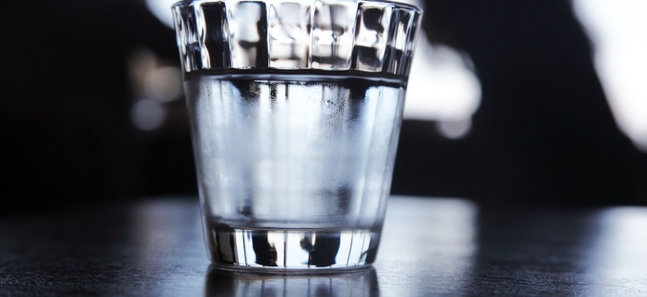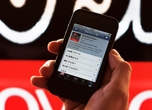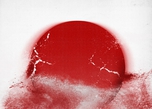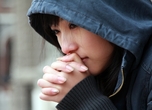Tokyo radiation, water and aftershocks information
The latest news, blogged as we receive it

Posted: Thu Mar 24 2011
We'll be keeping a live blog over the next few days to ensure that non-Japanese speakers in the Tokyo area are up to date with the latest food, radiation and water information. Comments can be sent in via our Twitter account or by emailing the editor. Please note, by submitting a comment you are accepting that it may be edited for house style and used on this page.
March 24
8.00pm
Today's news in brief
- Tokyo woke to a heavy aftershock that measured Shindo 5- at the epicenter in Ibaraki
- We saw a brief spate of mineral water panic buying online, and a rather mercenary character in Hyogo Prefecture attempting to sell tap water to Tokyo folk by the bottle (at the time of writing, two people had offered to give him 11 yen for his troubles)
- By the mid afternoon, the local government had announced that the water in the capital was once again fit to drink for all age groups, adding that they were opening the Akasaka Prince Hotel to quake and tsunami refugees
- Reports came in suggesting that Tokyo Disney Resort may have trouble re-opening with the current levels of electricity it requires
- Professor Hayano of the University of Tokyo released a chart of Kanto radiation levels in the early evening, though as Time Out Tokyo closes for the night, his figures are being questioned by a researcher at the Japanese Atomic Energy Agency
7.00pm
Daniel Garcia, a researcher at the Japanese Atomic Energy Agency, has tweeted to tell us that Professor Hayano's data (reported at 6.30pm today; see below) may require further scrutiny. 'Tokyo normal levels are around 35 nSv/h, Ibaraki around 50nSv/h,' Garcia tells us, going on to explain that, 'Hayano's "normal level" is at nearly 200 nSv/h'. We can't claim to be nuclear scientists, but the discrepancy looks fairly large from where we're sitting. If anybody has anything to add, contact us on the above address.
6.30pm
One of the best sources of radiation data to have emerged so far has been Professor Ryugo Hayano, of the University of Tokyo. Hayano released data via his Twitter account earlier this evening in the form of a graph demonstrating radiation readings taken in Ibaraki, Tochigi, Gunma, Saitama, Chiba, Kanagawa and Tokyo. The graph shows that radiation levels in Tokyo have climbed above what is considered to be a 'normal' measurement four times since March 16, with a sustained period of high (but still normal) radiation over the last two days. At the time of writing, the levels appear to be decreasing. While the Professor generally tweets in his native language, we still advise keeping an eye on his reports if you can - level headed missives every time.
6.00pm
The news from the latest Edano press conference is that the two workers hospitalised earlier today due to radiation over-exposure actually stepped into contaminated water, explaining the somewhat perplexing reports that they'd sustained particularly heavy injury to their legs. (Source: NHK TV report)
5:15pm
There's an interesting piece on the Japanese-language news site J-Cast about the continued problems facing Tokyo Disneyland, which has been closed since the March 11 earthquake. Despite the damage inflicted on its parking lot – now a poster child for the phenomenon known as ground liquefaction – the park itself was largely unaffected by the quake, and operators Oriental Land gave it the all-clear to reopen on March 18. But as distraught fans of Mickey and Stitch will tell you, that hasn't happened. Tokyo Disneyland's location in Urayasu City, Chiba puts it within Group 5 in TEPCO's scheduled blackouts, and it's also hamstrung by any disruptions on the JR Keiyo line. Then there's the power consumption of the park itself: combined with DisneySea, it guzzles up roughly 570,000 kWh a day, which is apparently the same as 50,000 households, or 10 Tokyo Domes. According to an Oriental PR rep quoted in the article, it's possible that Disneyland won't be reopening for another month or two. Here's the original article.
5.10pm
We can't help but feel that, with Tokyo tap water once again deemed safe, this panicky fellow has a lot of drinking to do...
4.40pm
More positive news comes from Inose-San, Tokyo's deputy governor, who has been busy on Twitter today. This time he tweets that the 700-room Akasaka Prince Hotel, scheduled for demolition, will be taken over by Tokyo Metropolitan Government and preserved as housing for evacuees.
3.32pm
Government officials say that the water in Tokyo is once again considered safe for all age groups, babies included. (NHK news report)
3.30pm
NISA reports that three members of staff at Fukushima Nuclear Power Plant were exposed to 170-180 mSv of radiation at around midday today. Injuries were sustained to their legs, and work has been postponed on reactor number three while two of them are hospitalised. (Source: Press conference screened on NHK's UStream channel)
3.15pm
In today's Time Out Tokyo interview, published here, leading architect Shigeru Aoki tells us that most Japanese buildings built after 1983 should be safe. What you really need to secure, he says, is your furniture.
2.15pm
Naoki Inose, Deputy Governor of Tokyo, has tweeted that the level of iodine measured at the Katsushika water plant dropped to 79 Bq/kg this morning. However, he says that the polluted water tested yesterday may still remain in the city's pipes, so we should parents of infants 12 months old and under should continue to take precautions.
2.05pm
One of the more heartening responses to the current water scare comes from Tokyo-based sports writer Hirotada Ototake. You might remember Ototake as the author of No One's Perfect, his bestselling account of growing up with a rare genetic disorder that meant he was born without any arms or legs. When he tweeted last night that he was still happily drinking Tokyo tap water, one follower replied: 'You'd get mad if I said you were already deformed before the radiation, right?' Ototake's response to that insensitive query is priceless: 'What if I sprouted arms and legs when I drank it? That'd be exciting.'
1.15pm
Proving that panic buying is not restricted to the supermarket, Yahoo Auctions Japan have two cases of 6x2 litre bottles of Suntory mineral water up for grabs. At the time of writing the bidding stands at 18,800 yen. In more normal times, the same item can sell for approximately one tenth of that price.
Elsewhere, Yahoo Auctions Japan have a listing for tap water bottled in Hyogo Prefecture, in the west of Japan. The price currently stands at 11 yen, though, unbelievably, bidding has actually begun.
1pm
Kawaguchi City in Saitama is reporting that levels of over 100 Bq/kg of radioactive iodine-131 – the government's highest permissible level for drinking water for babies – have been detected at one of its 7 water purification plants. Residents in the city are advised to refrain from letting infants aged under 12 months from drinking tap water. (Source: NHK World news flash.) A similar advisory has also just been issued in Matsudo City, Chiba (Japanese NHK report here.)
11.35am
Even Amazon Japan is struggling to keep pace with the demand for mineral water (and no, we didn't realise they sold it either). Stocks of San Benedetto (4,560 yen for 20 x 500ml), Galvannina Blu (6,300 yen for 12 x 750ml) and Fillico (31,500 yen for 6 x 720ml), however, remain curiously unaffected.
11.15am
Yukio Edano confirms in a press conference that not feeding tap water to children under the age of 12 months is just a precaution, and that the water will not affect the health of anyone older than that. The local government asks that Tokyo people refrain from panic buying mineral water. (Source: NHK TV report).
10.30am
NHK reports that the radioactive material detected in Tokyo water supplies only have the potential to harm infants under 12 months old. Starting today (Thursday), the government will distribute three bottles of mineral water each to the 88,000 children in this demographic, living within Tokyo's 23 wards and 'five adjacent cities' (NHK doesn't report which these are). The bottles are 550ml, and the government has asked mineral water companies to up their production rates as soon as possible. See the original NHK report here.
8.56am
A Shindo 5- quake rocks south Ibaraki Prefecture, felt at Shindo 3 in central Tokyo. No tsunami alert recorded. On the ground in the capital, it felt stronger than a 3. Tiny tremors could still be felt 20 minutes later.
8.30am
In response to an increasing number of questions being directed our way on Twitter, we've decided to re-open our information pages, this time to contain regularly updated news on the water and radiation situation in Tokyo. We're taking our information largely from NHK, along with a handful of other trusted sources.
On the ground in Tokyo, reactions to the Fukushima crisis have been mixed over the past week, with some citizens leaving the capital as a precaution immediately after the initial disaster, many returning in the last few days. News broke yesterday of a higher than usual level of iodine found in Tokyo tap water, thought to be unsafe for infants to consume. However, the BBC reports that, 'the extra risk from drinking tap water in Tokyo for a year would be far less than that of someone moving, say, from London to Cornwall for a year.' For readers who know little about Cornwall, it's a largely rural area in south west England, known mainly for its pleasant summer climate and a kind of quaint antiquity. Certainly not the kind of place you'd think of as being at radiation risk.
Our publisher reported having seen a spate of panic water buying in the Azabu-Juban area of Tokyo early yesterday afternoon, and the mineral water shelves in the Nissin supermarket we visited yesterday were empty. While experts claim that the water is generally still fit to drink, the feeling of mistrust here at the moment is palpable, probably at its highest point since March 11. However, since we can only go on the figures that are being reported in trusted media, we still feel that the biggest difficulties that Tokyo faces are the daily presence of relatively minor aftershocks and the continued threat of power cuts. At present, we don't feel the need to leave the city, though we concur that those visiting Tokyo at the moment may not be seeing this great city at its vibrant best.
1 | 2
Tags:
Tweets
- About Us |
- Work for Time Out |
- Send us info |
- Advertising |
- Mobile edition |
- Terms & Conditions |
- Privacy policy |
- Contact Us
Copyright © 2014 Time Out Tokyo














Add your comment